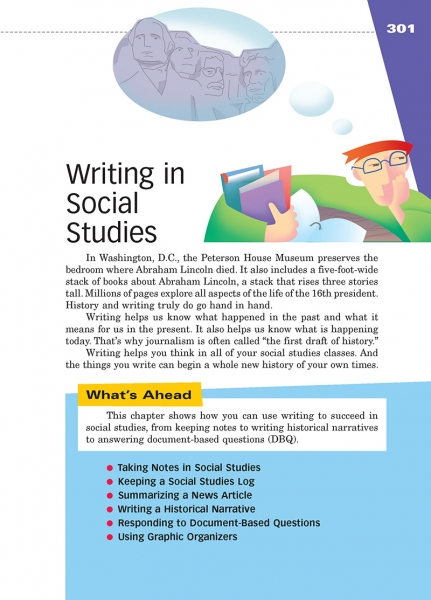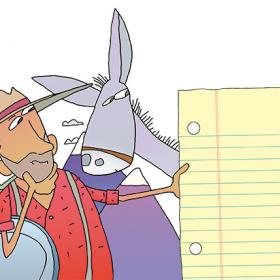Page 301 from

Start-Up Activity
Ask for two volunteers to arm wrestle. Have the volunteers perform in front of the class and tell everyone to closely watch what happens. Afterward, ask all of the students to write a brief description of the arm-wrestling match. Ask a few volunteers from the class to read their descriptions. Then ask the person who won and the person who lost to read their descriptions. Note how different (or similar) the descriptions are.
Note that a group of eye-witnesses can have different accounts of an experience, and certainly those involved will have different perspectives from those not involved. Historical writing is all about researching what many different people said about an event and then drawing evidence to synthesize these disparate accounts into a new, insightful perspective.
In this chapter, students will write in many ways about history and other social studies.
Also direct students to the "Geography," "Government," and "History" sections of the Almanac.
Think About It
“History is written by the victors.”
—Winston Churchill

Start-Up Activity
Ask for two volunteers to arm wrestle. Have the volunteers perform in front of the class and tell everyone to closely watch what happens. Afterward, ask all of the students to write a brief description of the arm-wrestling match. Ask a few volunteers from the class to read their descriptions. Then ask the person who won and the person who lost to read their descriptions. Note how different (or similar) the descriptions are.
Note that a group of eye-witnesses can have different accounts of an experience, and certainly those involved will have different perspectives from those not involved. Historical writing is all about researching what many different people said about an event and then drawing evidence to synthesize these disparate accounts into a new, insightful perspective.
In this chapter, students will write in many ways about history and other social studies.
Also direct students to the "Geography," "Government," and "History" sections of the Almanac.
Think About It
“History is written by the victors.”
—Winston Churchill




